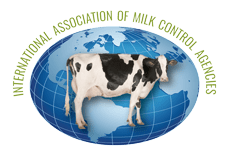Impact of COVID-19 on the Canadian Dairy Industry
As was probably the case in most dairy countries, the onslaught of the COVID-19 pandemic has had significant impacts on the dairy supply chain in Canada. Suddenly, restaurants, coffee shops, schools and daycares closed, and consumers rushed to the grocery stores to stock up on essentials.
Retail sales for dairy products are now extremely volatile. Data below show variations in sales of a few dairy products for the four weeks ending at the end of February, March and April, compared to the same period in 2019.
| Product | April 2020 vs. April 2019 | March 2020 vs March 2019 | February 2020 vs. February 2019 |
| Fluid milk | +12% | +12% | -1% |
| Cheese | +16% | +21% | +1% |
| Butter | +2% | +37% | 0% |
Generally, retail sales are clearly up but these numbers don’t tell the whole story. This growth was not sufficient to compensate for the loss of the HRI market (hotels, restaurants and institutions). For a few weeks at the end of March and beginning of April, Canadian marketing boards had to ask their members to dispose of milk at the farm. These boards also put in place strict production control measures as of April 1 and as a result, milk disposal came to a halt as soon as the 3rd week of April. Milk production in Canada dropped by 5.5% in April compared to March 2020 to align with the impact of COVID-19 on demand. This is quite an accomplishment on the part of producers, in a season that normally sees the highest production levels of the year. Milk disposal ended up being equivalent more or less to one day of production.
With the volatility of sales, it is now difficult to know how much milk will be needed in the coming months although the tools available to forecast demand are helping. Also, Canada can count on its stocks of butter and cheese to act as buffers if supply does not exactly match demand.
